 FEEDBACK: She said WHAT? Read what people think about our Classical Music Daily features, and have your say!
FEEDBACK: She said WHAT? Read what people think about our Classical Music Daily features, and have your say!
- chamber opera
- Dmitri Hvorostovsky
- Falla
- Lily Pons
- Franz Clement
- Highgate Choral Society
- Peter Sheppard Skærved
- Luis Buñuel
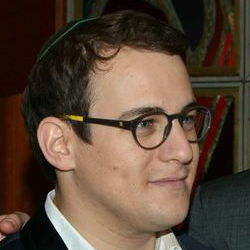 SPONSORED: Ensemble. Melting Rhapsody - Malcolm Miller enjoys Jack Liebeck and Danny Driver's 'Hebrew Melody' recital, plus a recital by David Aaron Carpenter.
SPONSORED: Ensemble. Melting Rhapsody - Malcolm Miller enjoys Jack Liebeck and Danny Driver's 'Hebrew Melody' recital, plus a recital by David Aaron Carpenter.
All sponsored features >>
Very Sensual
GIUSEPPE PENNISI steps up
to Caetani Castle to listen to
madrigals by Gesualdo
The Pontino is an area south of Rome. Until the 1930s, when it was cleared and reclaimed, it had been a large malaria-infected swamp. Now it sprawls with farms, and small and medium size industries, especially in the pharmaceutical sector. It used to be, by and large, a feud of the Caetani Princes and Dukes. Caetani Castle springs up on the top of Sermoneta, a Medieval walled borough that now has about a thousand residents. As a matter of fact, until a century ago, in the Pontino, life was mostly in the hills and mountains, far from mosquitos and bandits. Now Sermoneta is a tourist spot. There is a small pleasant hotel just inside the walls. There are almost no roads within Sermoneta but only lanes and steps. From the hotel, after seventy steps, one reaches a belvedere where the plain and the coastline can be admired. After more steps, the main square is reached with a few trattorias offering simple but excellent food. Stepping up once again, the visitor is in the imposing Medieval castle.
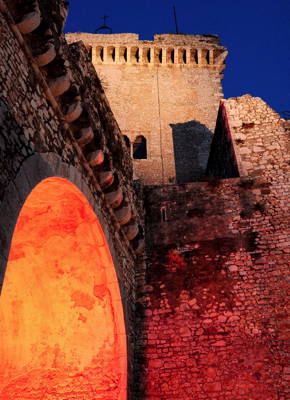
Caetani Castle. Photo © 2019 Cesare Galanti
For the last fifty five years, the castle has been a summer campus for music students and teachers coming from all over the world. Both students and teachers are housed within the castle. Caetani Castle is one of the main venues of the Pontino Festival, consisting of about twenty-five concerts, mostly of chamber music, in the month of July. The Pontino Festival is a fully private initiative with very limited Government support. Its concerts are held in prestigious monuments like Caetani Castle and Fossanova Abbey, as well as in a modern auditorium in the provincial capital, Latina.
On 20 July 2019, my wife and I reached Sermoneta - some two hours of driving, door-to-door. We found a comfortable room in the hotel, and in the evening we stepped up to the castle. There we were invited to share a very good dinner with the performers and the students at a long fourteenth century table in the main hall and then to enjoy the concert.
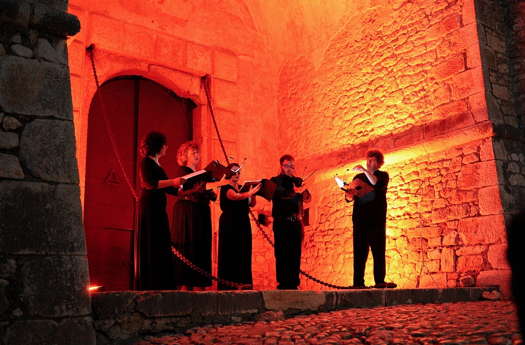
De Labyrintho Ensemble singing at Caetani Castle. Photo © 2019 Cesare Galanti
It was an itinerant concert. It started on the castle's drawbridge. Afterwards, audience (from the plain as well as from Sermoneta itself), students and musicians walked to the main courtyard and eventually to the former stables, now a small hall with incredible acoustics wrapping listeners.
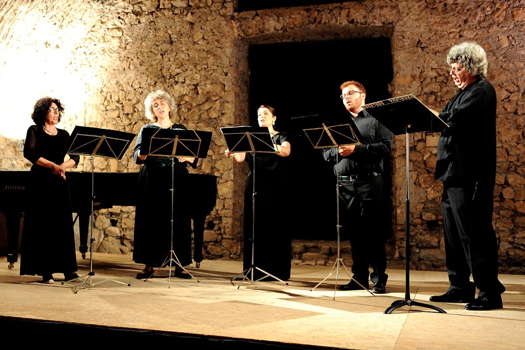
De Labyrintho Ensemble singing at Caetani Castle. Photo © 2019 Cesare Galanti
The concert had a title: L'Avida Sete - The Greedy Thirst. It was the brain child of Sandro Cappelletto, who had written the libretto and acted as the narrator. It included madrigals by Carlo Gesualdo da Venosa (1566-1613), who is rather unique as he was both a very wealthy prince in the Kingdom of Naples and also a musician. At that time, normally musicians worked for the aristocracy and the aristocrats never composed. Gesualdo killed his first wife and her lover when, back home from a hunting game, he found them in his bed. He had to escape to Ferrara because the families of the murdered couple wanted to slaughter him. He became acquainted with Northern Italy's musical world and married an Este Princess, who left him a few years after the wedding. He returned to his castle and lived the rest of his life there with his servants and with the equipment to print musical scores he had purchased in Northern Italy.
He had been forgotten for almost four hundred years when Igor Stravinky discovered him in the 1960s. In Stravinsky's own words: Gesualdo is a planet without satellites and a composer with neither father nor children. Glenn Gould compared him with Bach.
Gesualdo's madrigal are unique. They are very dramatic, and not sentimental or even religious, quite unlike most of the madrigal collections of that period. They are very chromatic and encompass incredible modulations, often depending on block contrast of unrelated harmonies. In his vocal writing, leaps of augmented and diminished intervals increase the difficulties of intonation present in all his chromatic passages. The madrigals are also very sensual, nearly carnal, mirroring a tormented and lonely person. In addition, words and music are blended skilfully together and aim at expression of sentiment rather than describing situations or nature and landscape. They seldom deal with romance but, rather, focus on suffering and death.
This may be one of the reasons why his experiments were not continued by other composers, and why they sound so modern. The subject has attracted many contemporary composers: for example, an opera on Gesualdo by Alfred Schnittke was premiered in 1995 at the Vienna Staatsoper and has had several productions in Europe. Salvatore Scarrino's Luci Mie Traditrici is broadly inspired by Gesualdo's life story and music.
The madrigals require especially trained artists. The De Labyrintho Ensemble - Natalia Carlisi, Laura Fabris, Elena Carzaniga, Riccardo Pisani and Walter Testolin - have been working for years both in Italy and abroad on this special kind of vocalism, and on 20 July they rendered Gesualdo's sonorities perfectly. As narrator, Sandro Cappelletto gave emphasis to the dark inner torments of the composer.
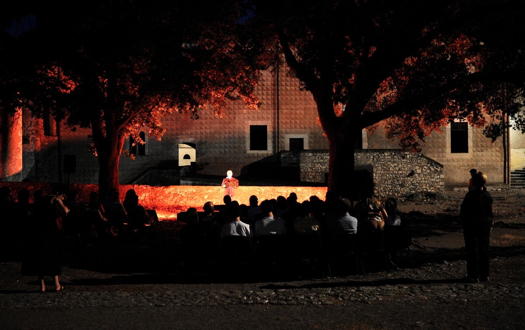
Sandro Cappelletto at Caetani Castle. Photo © 2019 Cesare Galanti
After receiving warm applause from the audience, the ensemble offered as an encore a tender melodic madrigal by Jacques Arcadelt, a Flemish composer who lived and worked at the Parisian Court, some fifty years earlier than Gesualdo. The difference in style is terrific.
It was well worth stepping up to the castle for this concert.
Copyright © 26 July 2019
Giuseppe Pennisi,
Rome, Italy



